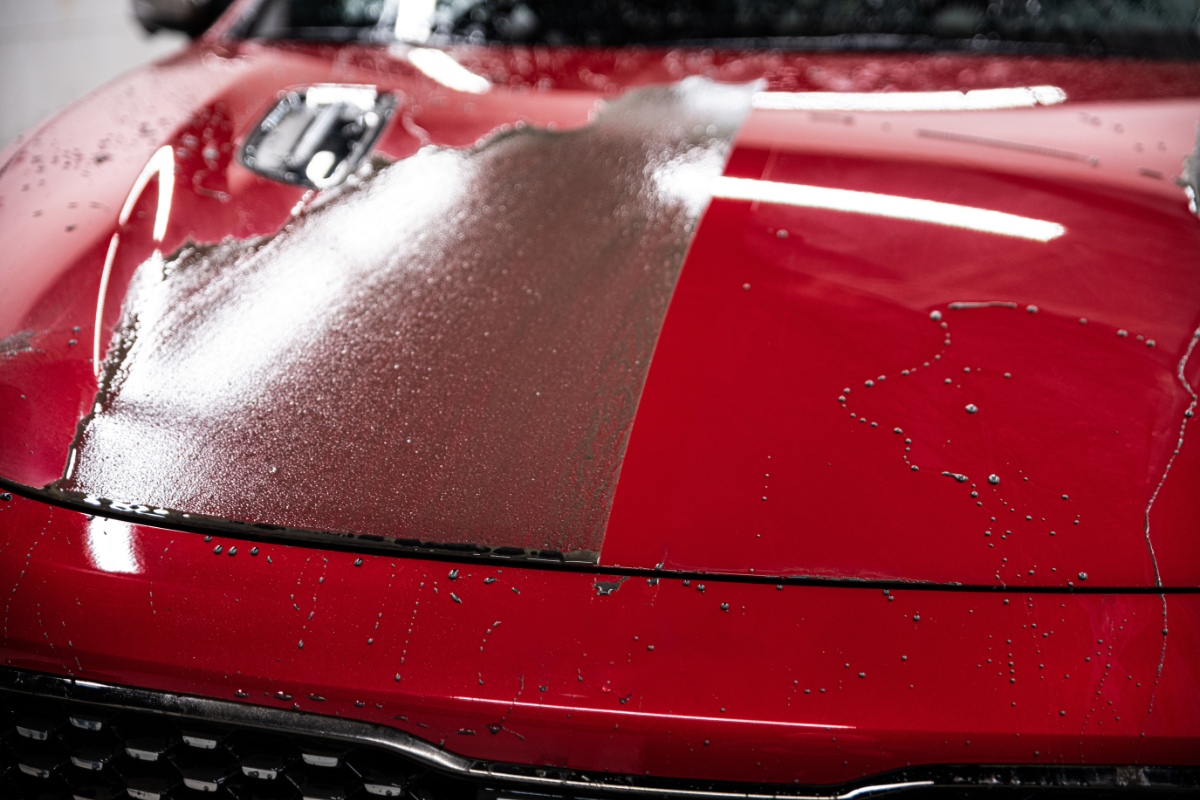Choose trusted auto detailing for a thorough interior and exterior cleaning.
Choose trusted auto detailing for a thorough interior and exterior cleaning.
Blog Article
A Comprehensive Guide to the Kinds Of Ceramic Finish on the Market
Ceramic coatings have actually emerged as a crucial solution across various markets due to their special buildings and applications. As we check out the distinctive qualities and applications of these finishes, the ramifications for performance and long life end up being significantly noticeable, elevating concerns about which kind may best suit your needs.
Understanding Ceramic Coatings
Ceramic finishings are innovative safety remedies that have actually acquired appeal in numerous markets, specifically in vehicle and aerospace applications. These coatings include a fluid polymer that, when treated, creates a sturdy, hydrophobic layer on the surface of the substratum. This layer gives improved resistance to environmental impurities, UV radiation, and chemical direct exposure, thus expanding the life and visual appeal of the underlying material.
The essential part of ceramic layers is silica, which contributes to their solidity and toughness. The application process typically involves surface area preparation, application of the coating, and healing, which can be achieved via heat or UV light. When cured, ceramic layers display exceptional bonding homes, enabling them to adhere strongly to a selection of surfaces, consisting of metals, plastics, and glass.
Along with their safety attributes, ceramic finishes also supply simplicity of upkeep. Their hydrophobic nature decreases the adherence of dirt and grime, making cleaning less complex and much less frequent. Overall, the fostering of ceramic finishes represents a significant improvement in surface defense innovation, giving both useful and visual advantages across multiple sectors.
Sorts Of Ceramic Coatings
Numerous kinds of ceramic finishes are available, each created to fulfill specific performance requirements and applications - Paint Protection Film. One of the most usual types consist of:
Silica-based Coatings: These layers mainly include silicon dioxide and are known for their longevity and chemical resistance. They are widely used in automotive and commercial applications.
Titanium Dioxide Coatings: Distinguished for their photocatalytic properties, titanium dioxide layers are frequently applied in atmospheres where self-cleaning and antifungal residential properties are desirable, such as in structure products and automotive surfaces.
Zirconia Coatings: Defined by their high-temperature security and thermal resistance, zirconia layers are used in applications such as wind turbine engines and high-performance automotive parts.
Alumina Coatings: Exhibiting superb solidity and thermal stability, alumina coatings are frequently utilized in wear-resistant applications, consisting of cutting tools and industrial equipment. - Car Detailing
Crossbreed Coatings: Combining the residential or commercial properties of numerous products, crossbreed layers offer improved performance qualities, making them appropriate for one-of-a-kind and demanding applications.
Each kind of ceramic coating serves distinctive objectives, enabling individuals to choose one of the most proper solution based upon certain ecological problems and performance needs.
Benefits of Ceramic Coatings
Coatings play an essential duty in improving the efficiency and longevity of surface areas throughout numerous markets. Ceramic finishings, specifically, offer countless advantages that make them significantly preferred amongst producers and customers alike. One of the primary advantages is their outstanding sturdiness. These finishings are immune to scratches, chemicals, and UV rays, guaranteeing that the underlying surface continues to be protected with time.
In enhancement to toughness, ceramic finishes offer superb hydrophobic residential or commercial properties, permitting for simple cleansing and maintenance. This water-repellent nature reduces the adherence of dust, crud, and other pollutants, which can prolong the aesthetic charm and functionality of the surface. Additionally, ceramic finishes can significantly improve thermal resistance, making them excellent for applications that sustain high temperature levels.

Application Refine
When applying ceramic coatings, a careful technique is crucial to attain optimal outcomes. A clean surface area makes certain correct adhesion of the covering.
As soon as the surface is prepped, the following action is to apply the ceramic her explanation covering. The finish needs to be applied in thin layers, as thicker applications can lead to irregular finishes.
After application, the layer needs a particular curing time, normally ranging from a couple of hours to a complete day, depending upon the product. During this moment, it is vital to stay clear of direct exposure to moisture or contaminants. A gentle buffing may be required after healing to enhance the gloss and get rid of any high areas. Following these steps faithfully will optimize the effectiveness and longevity of the ceramic covering, offering a resilient protective layer for the surface area.
Upkeep and Durability
To make sure the durability and effectiveness of a ceramic finish, normal maintenance is crucial. Ceramic layers, recognized for their resilience and protective high qualities, call for certain treatment routines to optimize their lifespan and efficiency.
Along with routine washing, regular examinations are essential. Seek indicators of wear or damages, such as hydrophobic properties reducing or surface area flaws. If necessary, a light polish may be put on rejuvenate the finishing without removing it away.
Furthermore, the application of a booster spray can enhance the finishing's hydrophobic results and restore its gloss. This is especially beneficial for finishings that i loved this have been in usage for an extensive duration. Inevitably, by sticking to these upkeep methods, one can considerably prolong visit this site the life of a ceramic coating, ensuring that it remains to supply ideal protection against environmental aspects and maintain the aesthetic appeal of the vehicle.
Final thought

Report this page